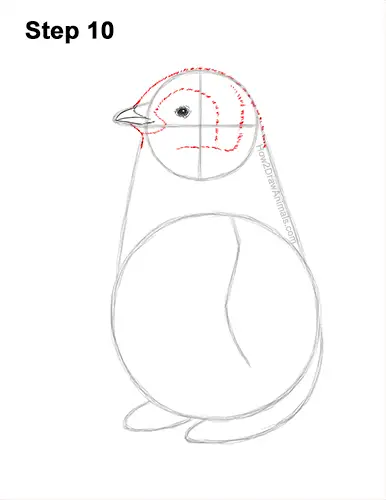
Step 10: Use the first circle as a guide to draw the rest of the baby penguin's head. Draw a series of short strokes along the top edge of the circle to create the fluffy shape of the head. Make the left side of the head wider so that the strokes end on top of the beak. Draw a few short strokes below the beak for the fluffy texture on the bird's neck. Draw a series of short strokes around the eye for the pattern on the down feathers. The pattern curves around the eye and then back to the left side toward the beak. To the right, draw a curved, vertical line that's made up of short strokes for more of the pattern.
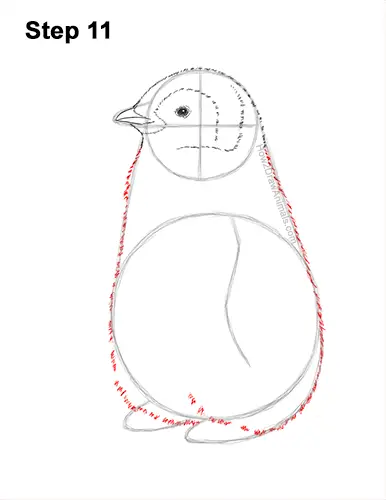
Step 11: Use a series of short strokes along the outer edges of the guides that are under the head to create the penguin chick's fluffy body. At the bottom, curve the strokes to the right so that they overlap the small arc to the left. Keep the strokes short for a fluffy texture. If you make the strokes too long, the feathery down will be too shaggy. Draw strokes across the arc for the down feathers on the right leg. Continue to draw short strokes along the right outer edges of the guides to complete the shape of the penguin's body.
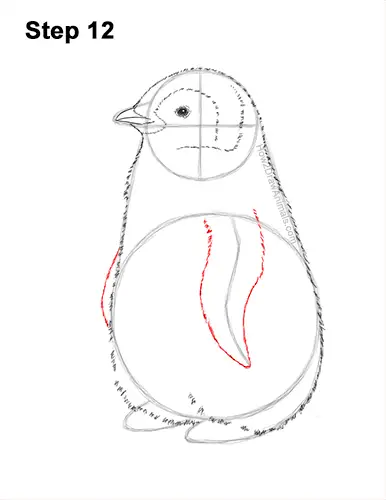
Step 12: Use the wavy line in the middle of the body as a guide to draw the baby penguin's flipper. Draw the shape of the flipper around the guide. Make the top part wide and the bottom part narrow. When you get the shape right, darken the flipper using short strokes for the fluffy texture. Follow the path of the guide line so that the flipper has a similar wavy shape. On the left side, draw a short, curved line for the other flipper peeking from behind the penguin's body.
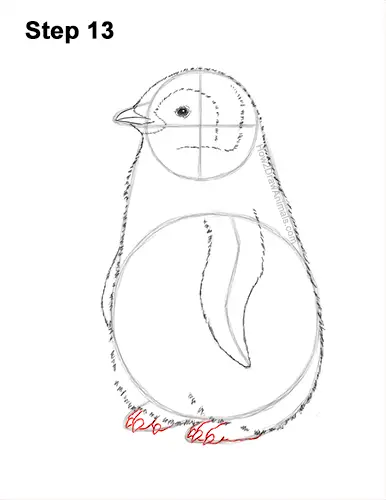
Step 13: Use the small arc on the bottom, right side as a guide to draw the penguin's first foot. Separate the toes by drawing long curved lines across the arc. On the tip of the toes, draw triangular shapes for the nails. Make the toes wide and round. The nails should be similar to curved cones. Use the arc on the left as a guide to draw the visible toes of the bird's other foot. Draw this foot the same way. Use curved lines for the toes and triangular shapes at the tips for the nails.
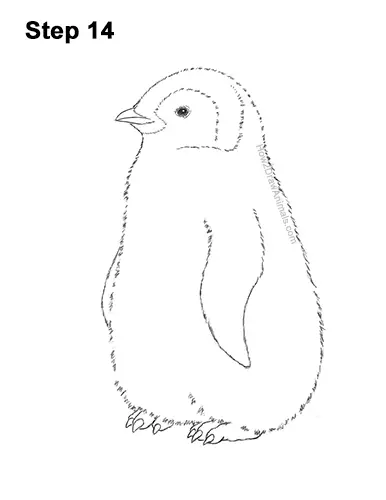
Step 14: For a cleaner look, erase as much as you can of the initial guide lines. Don't worry about erasing all of the guides. It's okay to leave some behind. Re-draw any final sketch lines you may have accidentally erased.
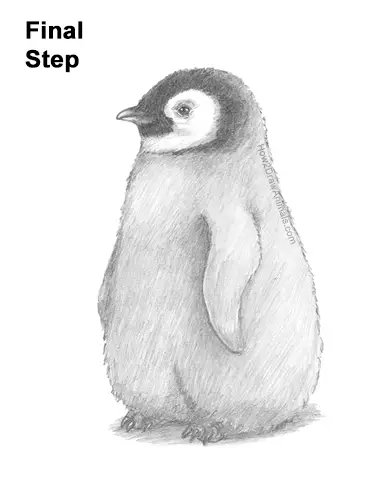
Final Step: Shade your penguin chick drawing. Use a medium value for the base of the beak and a light value for the tip. Use a dark value for the pattern on the head. Vary the pressure on your pencil to get different degrees of tonal value. Use a very light value for the rest of the bird's body, especially on the chest. Shading can be time-consuming, so be patient and take breaks. For a more detailed guide on how to shade, check out this tutorial: How to shade.
Add a bit of light value around the penguin chick's eye to create shadows on the white section. Use a darker value along the edge of the flipper and on the bottom for more shadows. Use a streaky dark value to shade the bird's rough and bumpy feet. It's a good idea to use reference as you draw for a more accurate depiction of a baby penguin. Use a dark value to add a cast shadow at the bottom. Don't forget to pause the video to draw at your own pace.
Thanks for visiting! Subscribe to the How2DrawAnimals YouTube Channel for a new tutorial every week.
To learn how to draw popular cartoon characters, visit EasyDrawingTutorials.com.
To learn how to draw Manga, visit How2DrawManga.com.
RELATED TUTORIALS
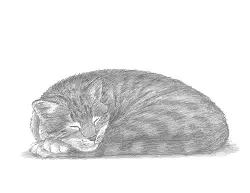 |
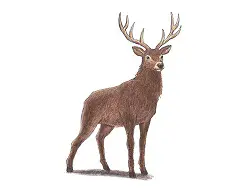 |
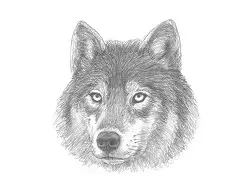 |







